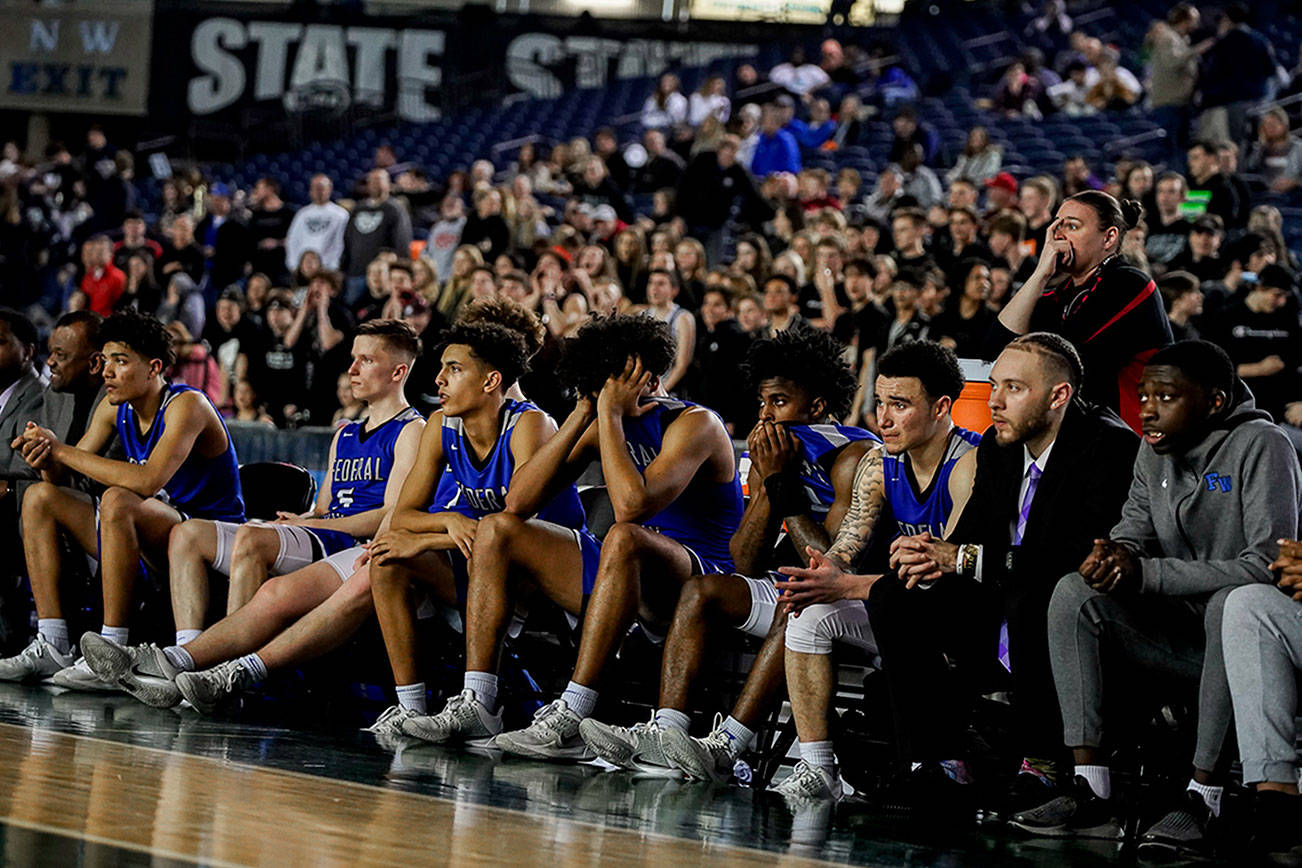A vision of what a return to play will look like for local student-athletes became clearer Oct. 6.
But those hoping for prep sports to start sooner rather than later will likely still have to wait.
In a release, the Washington Interscholastic Activities Association announced new return-to-play guidelines for prep sports based on guidance set forth by the Governor’s Office and the Washington State Department of Health.
The new guidance tiers individual counties by risk — high, moderate and low — using the statistical benchmarks of COVID-19 cases per 100,000 residents in a given county as well as the percentage of positive tests. It also uses a three-tier system to classify sports by risk.
“These revised guidelines give greater flexibility to school administrators to offer education-based athletics and activities and meet the demand of their students and communities,” the release said. “The WIAA Executive Board and staff are pleased with the work that has been done to allow students to be more involved with their schools, as participation in the school setting provides safer and more equitable opportunities for students, especially during this time.”
King County currently falls in the moderate-risk category, with a case rate of 55.6 per 100,000 residents over two weeks and a 2% positive-test rate over a week, according to the Washington Risk Assessment Dashboard. Counties in the middle of the three-tier system are those with 25 to 75 cases per 100,000 residents and less than 5% positivity rate.
Under the moderate-risk tier, teams can hold intra-squad competitions and league games for sports in the low- and moderate-risk categories. Only one adult — parent, guardian or caregiver — is allowed in attendance for each student-athlete in uniform. Spectators must maintain a distance of six feet from one another and wear masks.
Tournaments aren’t allowed with the exception of postseason, playoff, regional or state championship competitions sanctioned by a statewide interscholastic activities administrative and rule-making body that oversees competition in all counties in the state, according to the release.
Cross country, golf, swimming and diving, tennis and track and field all qualify as low-risk sports, with sideline cheerleading also able to resume with no contact. Moderate-risk sports are baseball, bowling, gymnastics, soccer, softball and volleyball.
High-risk sports are also allowed to begin intra-squad competition in counties that fall in the moderate-risk tier. Those sports are basketball, football, wrestling and cheerleading and dance with contact.
As high-risk sports, football, basketball and wrestling can’t begin league games until a county enters the low-risk tier — under 25 cases per 100,000 residents and less than 5% positivity. At that point, attendance is based off the gathering size limits of Gov. Jay Inslee’s Safe Start Plan.
Counties at high risk — over 75 cases per 100,000 residents or above 5% positivity rate — can start league games and competition in only low-risk sports. Attendance rules are the same as moderate-risk counties.
Current plans set forth by the WIAA call for basketball, wrestling, boys swim and dive, girls bowling and gymnastics to start practices Dec. 28 as a part of Season 2.
That could lead to some reshuffling of the current sports calender. Many counties will have to make significant drops in statistical benchmarks to start basketball and wrestling in just over two months.
“That’s something the (WIAA) Executive Board will be discussing as it meets over the next month,” WIAA Sports and Actives Information Director Casey Johnson said in an email Wednesday. “We would like to have any changes to seasons confirmed and announced by late November.”
A late-November announcement would effectively stymie any hope held by those who are pushing for a swifter return to high school sports, which includes Student-Athletes of Washington, a group formed by Archbishop Murphy defensive end Josh McCarron and handful of the state’s high-level football recruits.
The executive board currently has four meetings scheduled through November. Those dates are Oct. 8, Oct. 20, Nov. 12 and Nov. 17, according minutes from a meeting Sept. 22.
Everett School District athletics director and District 1 director Robert Polk noted that the current seasons the WIAA has planned avoids, “putting sports that don’t traditionally, per se, compete against each other in a season.”
“For example, if there’s a kid who plays basketball and football, we don’t really want to put those two sports in the same season because he has to choose,” he said.
It remains to be seen whether or not that standard is upheld if season reshuffling does occur.
The lengthy set of guidelines also addresses exposure protocol, hygiene, cleaning, ventilation and transportation issues.


